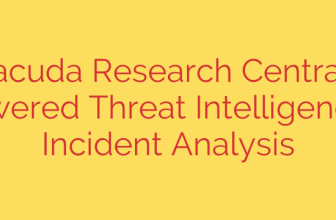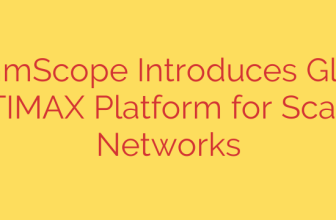
Unlocking Zero Trust: How Microsegmentation Simplifies CISA Compliance
The move toward a Zero Trust security architecture is no longer an option—it’s a federal mandate and a modern cybersecurity imperative. The Cybersecurity and Infrastructure Security Agency (CISA) has provided a detailed roadmap with its Zero Trust Maturity Model (ZTMM), guiding organizations on this critical transition. However, navigating its five pillars and multiple stages can feel complex and overwhelming.
Fortunately, there’s a powerful strategy that can significantly streamline this journey: modern microsegmentation.
Instead of tackling each requirement of the CISA framework individually, microsegmentation provides a unified solution that addresses multiple pillars simultaneously. It acts as a force multiplier, helping you build a resilient and compliant security posture faster and more efficiently.
The Core Challenge of the CISA Framework
The CISA ZTMM is built on the foundational principle of “never trust, always verify.” It dismantles the old “castle-and-moat” security model, where anything inside the network perimeter was trusted by default. The framework is organized around five key pillars:
- Identity: Authenticating and authorizing users and services.
- Devices: Validating the security posture of every device accessing resources.
- Networks: Segmenting networks and controlling traffic flows.
- Applications & Workloads: Securing applications and their communications.
- Data: Protecting data at rest and in transit.
Achieving maturity across all five pillars requires a fundamental shift in strategy and tooling. This is where the practical application of microsegmentation becomes a game-changer.
What is Microsegmentation?
Microsegmentation is a security technique that involves breaking down a network into small, isolated zones—down to the individual workload level. By creating granular security perimeters around each application, you can enforce strict access policies that dictate exactly which communications are allowed.
This approach drastically reduces the network’s attack surface. If a breach does occur, microsegmentation contains the threat within that tiny segment, preventing an intruder from moving laterally across your network to access sensitive data and critical systems.
Mapping Microsegmentation to the Five CISA Pillars
The true power of microsegmentation lies in its ability to support and accelerate progress across the entire CISA framework, not just the Network pillar. Let’s break down how it applies to each one.
1. Identity Pillar
The Identity pillar focuses on moving beyond IP addresses to validate every request. Modern microsegmentation aligns perfectly with this goal by using rich, identity-based context to build security policies. Instead of writing rules based on fragile IP addresses, you can create policies based on workload metadata, such as the application’s role, environment (production, development), or compliance scope (PCI, PII).
- Key Action: Policies are tied to the workload’s identity, not its network location. If a workload moves, its security policy automatically moves with it, ensuring continuous protection.
2. Devices Pillar
While microsegmentation doesn’t directly manage device health, it is critical for containing threats from compromised or non-compliant devices. If a managed device is compromised or an unmanaged personal device connects to the network, segmentation policies can ensure it cannot communicate with critical applications or databases.
- Key Action: Isolate untrusted or compromised devices by denying them access to protected application segments, effectively neutralizing the threat of lateral movement.
3. Networks Pillar
This is the most direct and obvious application of microsegmentation. The CISA ZTMM calls for organizations to control internal network traffic (known as east-west traffic) and eliminate implicit trust. Microsegmentation is the primary tool for achieving this.
- Key Action: Prevent all unauthorized lateral movement between workloads. By enforcing a default-deny policy, only explicitly allowed communications can occur, creating a true least-privilege network environment. This is a foundational step toward mature Zero Trust.
4. Applications & Workloads Pillar
CISA requires that access to applications is strictly controlled. Microsegmentation moves the security controls directly to the workloads themselves, wrapping each application in its own secure perimeter. This ensures that only authorized workloads can communicate with each other, preventing application-level attacks from spreading.
- Key Action: Gain deep visibility into application dependencies and enforce policies that control inter-application communication. This stops attackers from using a compromised web server to pivot to a sensitive database server.
5. Data Pillar
The Data pillar is focused on securing data wherever it resides. While other tools handle data encryption and classification, microsegmentation plays a vital role in protecting access to it. By isolating databases, file stores, and other data repositories, you ensure that they can only be accessed by authorized applications and users.
- Key Action: Create secure segments around your most sensitive data assets. By tightly controlling the communication pathways to these assets, you effectively protect the data from unauthorized access.
Actionable Steps for Implementation
Adopting microsegmentation doesn’t have to be an all-or-nothing effort. A phased approach can deliver immediate security wins while building momentum toward full Zero Trust maturity.
- Map Your Environment: The first step is always visibility. You can’t protect what you can’t see. Use a modern segmentation platform to map all application traffic and dependencies across your hybrid environment. This initial map is invaluable for understanding your current risk.
- Start with a High-Value Application: Begin by segmenting a single critical application. Ringfence it by creating policies that only allow necessary connections, blocking everything else. This provides immediate protection and a quick win.
- Test and Validate: Before enforcing any blocking policies, run them in a monitoring or testing mode. This allows you to validate that your rules don’t disrupt legitimate business processes.
- Enforce and Expand: Once you are confident in your policies, move to full enforcement. From there, you can systematically expand your segmentation efforts across other applications and environments, steadily shrinking your attack surface.
Ultimately, the journey to Zero Trust is a strategic imperative for protecting against modern cyber threats. While the CISA framework provides the “what,” modern microsegmentation delivers the “how.” By integrating this strategy, organizations can simplify compliance, reduce risk, and build a truly resilient security architecture for the future.
Source: https://www.bleepingcomputer.com/news/security/how-to-simplify-cisas-zero-trust-roadmap-with-modern-microsegmentation/








